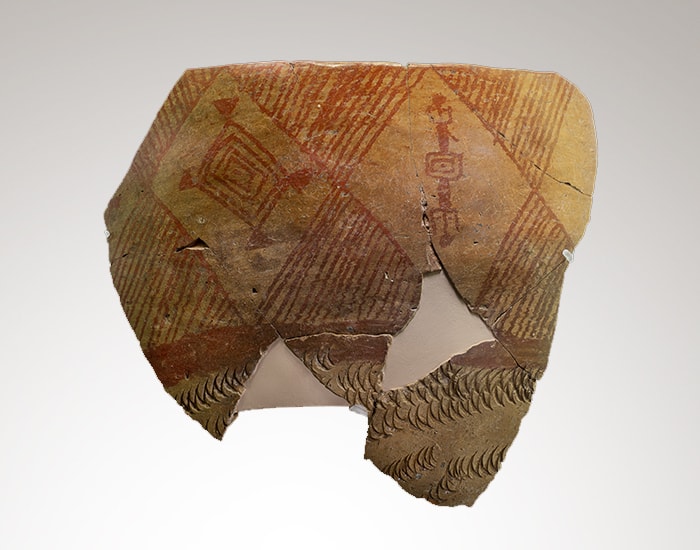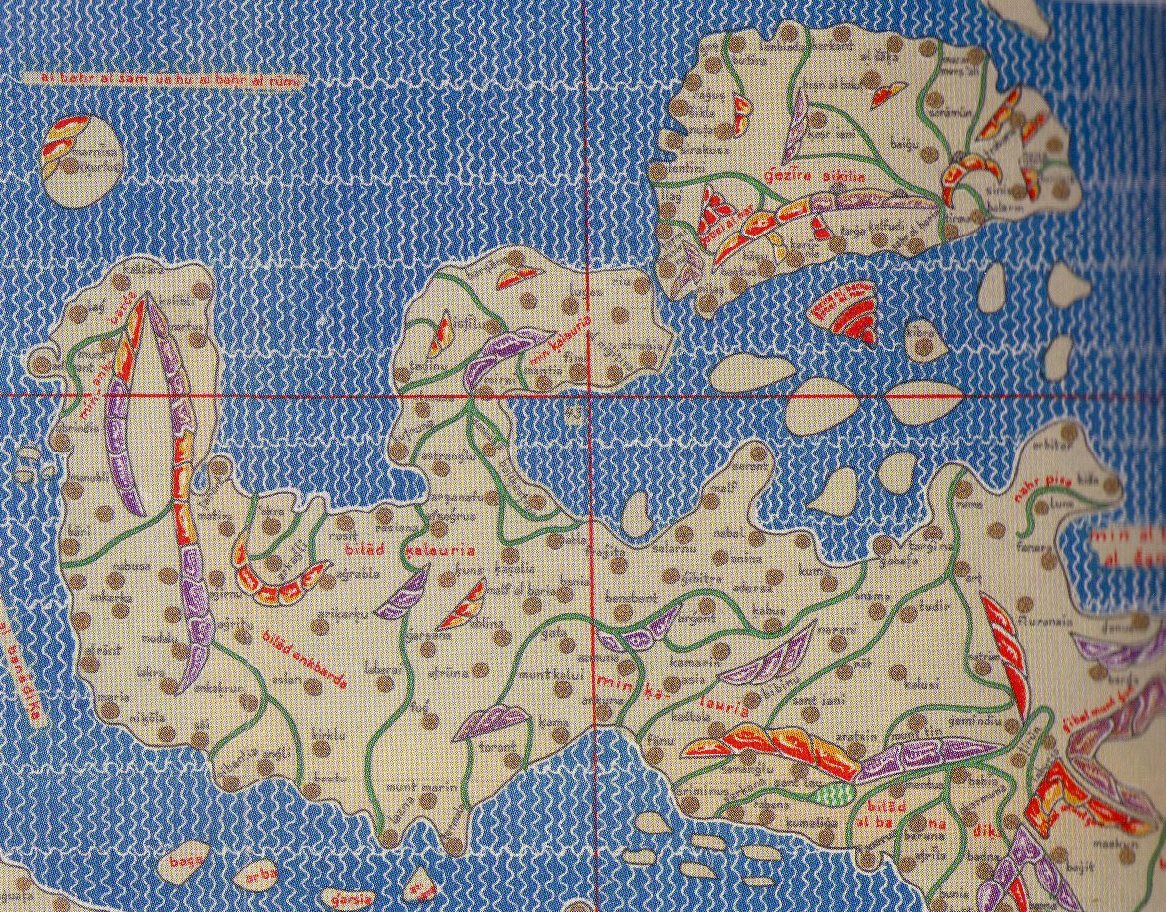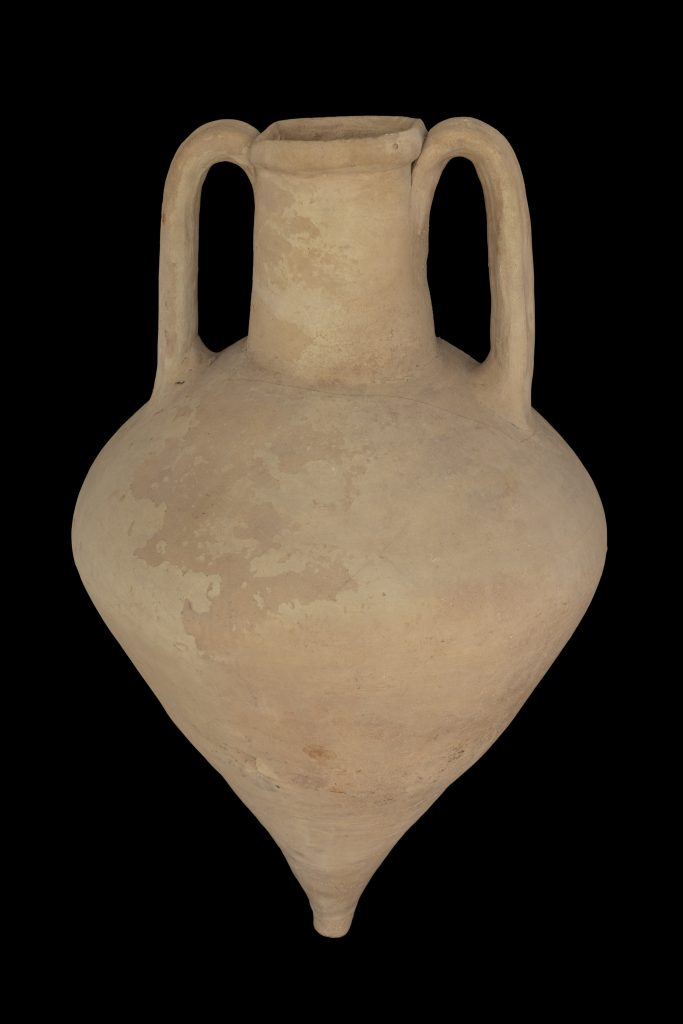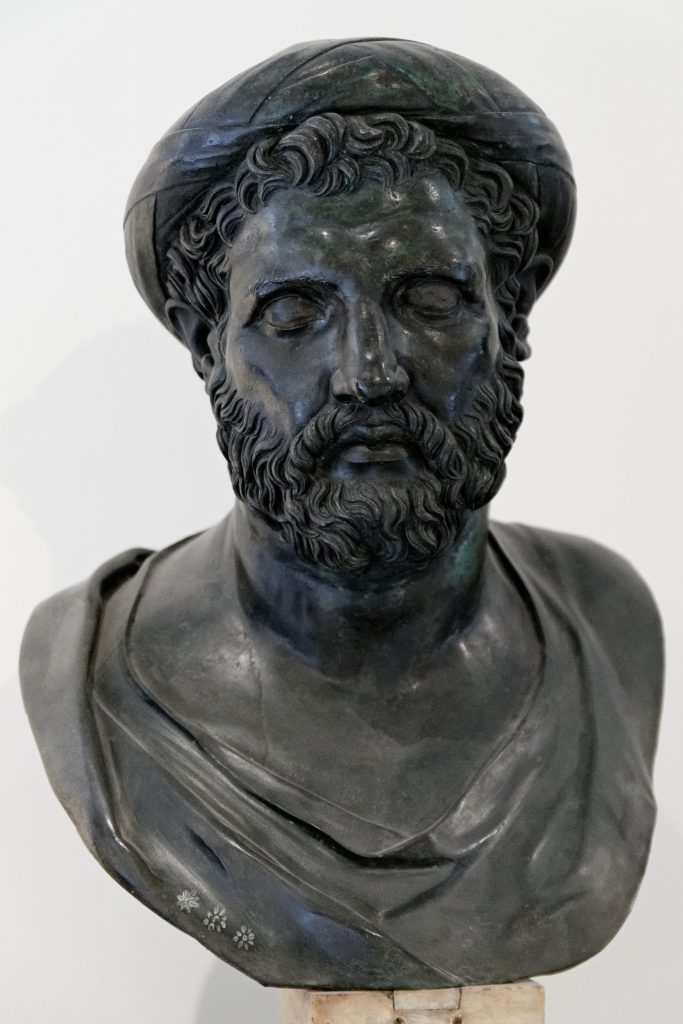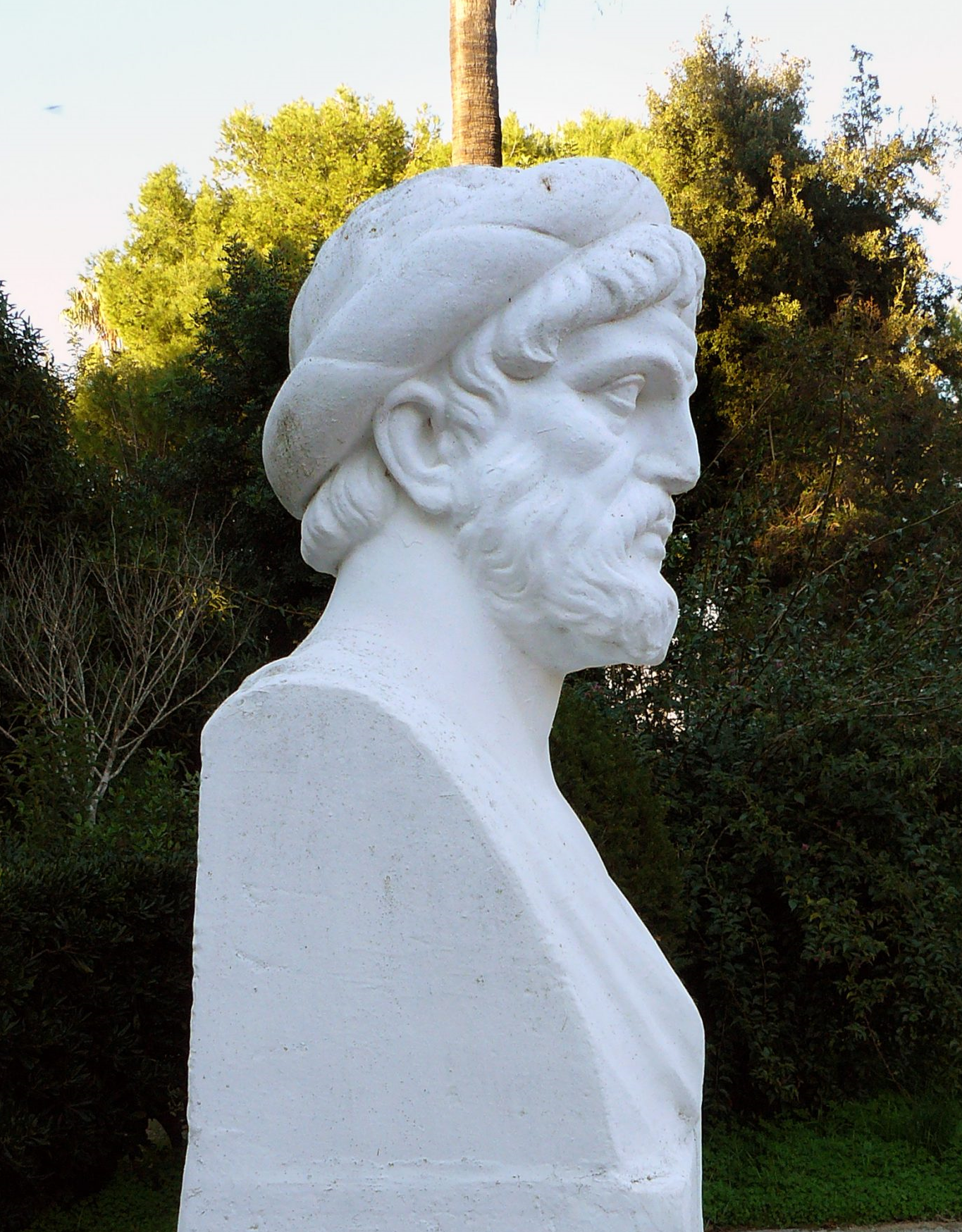TARANTO MAGNOGRECO ENG
FROM ANTIQUITY TO THE MAGNA-GREEK PERIOD

Bronze pin with a double spiral head decorated with engraving. 1300-1000 BC, found in Taranto, Scoglio del Tonno, 1899. (photo MArTa)
THE FIRST LANDING: THE `TUNA ROCK`
In 1899, the excavation of the Scoglio del Tonno (“Tuna Rock”), a promontory to the west of the mouth of Mar Piccolo, during the construction of the mercantile harbour quay, brought to light the remains of a Bronze-Iron Age settlement. An active and growing community had already been identified in the area over a period of time stretching from the Middle Neolithic to the 12th century BC: they had found ‘cave tombs’ and noted the use of red ochre in funerary rites.
And then the presence of Lipari obsidian (a volcanic glass much sought after and traded in antiquity to make weapons and sharp implements), and a deposit of ceramics from the Mycenaean period (14th-13th centuries BC) suggests the presence of an actual settlement there already at that time.
FROM ANTIQUITY TO THE PRESENT DAY
The port of Taranto has been of significance in different historical periods from a commercial point of view. Beginning with the Magna-Greek period and continuing until the mid-eighteenth century under Bourbon rule. In the French decade, at the beginning of the 19th century, it established itself as a military stronghold, and the same was true after the Unification of Italy.
FOUNDATION: MYTH AND ARCHAEOLOGICAL EVIDENCE
Historical tradition dates the foundation of Taranto to 706 BC, by a Spartan warrior, Phalanthos, who landed on the shores of Taranto. The archaeological findings at the Scoglio del Tonno (“Tuna Rock”) [link to Scoglio del Tonno] (near the present stone bridge) confirm commercial contacts between the Greeks and the indigenous peoples.
The port of Taranto, during the city’s period of greatest splendour, from the 6th century BC until the Roman conquest, was the busiest of the southern ports. The power of its fleet and commercial activities gave ancient Taras considerable political and economic influence, as can be seen from the wide distribution of Tarantine coins [Link to coins minted in Taranto] and ceramics.
THE FIGURE OF ARCHYTAS
After the mythical Phalanthos, who is said to have founded the city following the words of the oracle of Delphi, it was Archytas (428-360 B.C.) who brought Taranto to its greatest splendour. Elected seven times as ‘stratego’, i.e. military commander and governor of the city, he implemented a development policy that led Taranto to become the richest and most important metropolis of Magna Graecia. By building temples and monuments he gave the city a new appearance; he encouraged trade by sea, strengthening relations with various coastal cities in Sicily, Istria, Greece, North Africa and Asia Minor.
The sea was in his destiny: he died in a shipwreck near the promontory of Mattinata, in the Gargano, during an action supporting the Syracusans in the Adriatic area.
ARCHYTAS IN THE SCIENCES
Archytas was an eclectic man: a Pythagorean philosopher, he was also a friend of his contemporary Plato (428-348 BC); as a mathematician he described the properties of the cube; as a mechanical engineer he built a flying machine known as Archytas’ Dove; as a musician, he adjusted the spacing of the flute’s holes in order to achieve better harmony, and invented a machine for making various sounds.
The poet Horace (65-8 BC) composed an ode in his honour, describing him as:
“measurer of the sea, and of the earth, and of the numberless sands; and a man who on the celestial spheres dared to rise and wander”.

